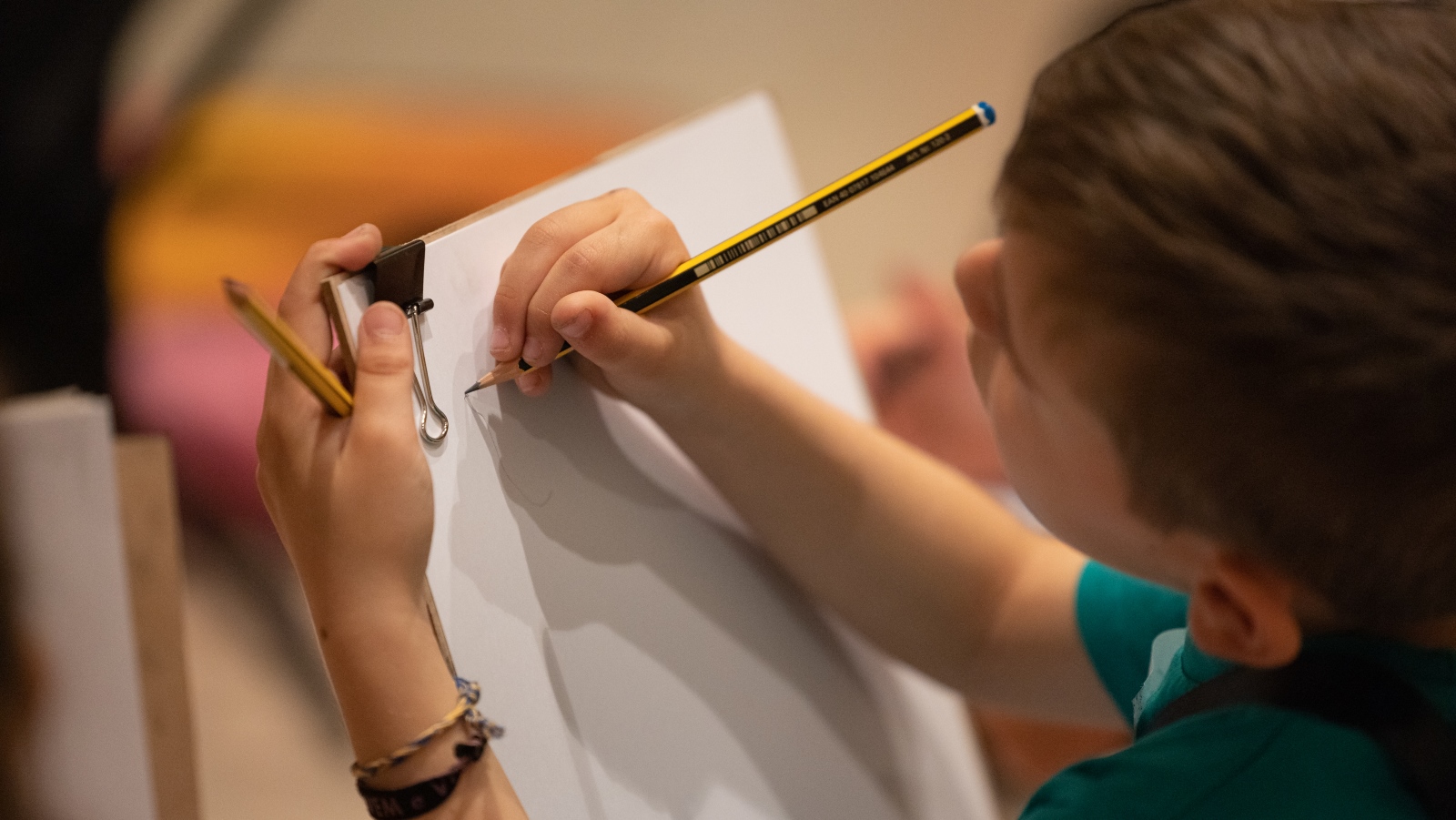Drawing for curious minds
Event Slider
Date
- / Cancelled / Sold out
Location
Main Gallery Calouste Gulbenkian MuseumDrawing is our way of encountering the world. Everyone draws or has done at some point in their life. For some people, drawing later turns into writing, while for others it becomes a lifelong practice. There are many situations in which we use drawing, particularly when we lack the words to communicate: maps and diagrams, specific descriptions of a shape or doodles as we talk on the phone. Drawing is also a way of getting to know, of training the concentration, of feeding curiosity and activating the imagination… to the point where we can re-imagine the world around us!
In these sessions, we will look at works from the Gulbenkian Museum to propose a new gaze through the lens of drawing.
Programme
Reflections in the water
Have you ever seen the reflection of the landscape in a river, or even just a pool of water, and noticed what happens to the reflection when that water moves?
In this session, we will focus on a painting by Claude Monet, a painter who was very attentive to the phenomena around him and who, in a very unique way and using an incredible colour palette, offered us a new way of looking at things. We will discover how to create this effect of reflections on water through drawing.
The passing moment
In this session, we will look at a work that conveys a moment of tranquillity, which contrasts with the very swift technique used to paint it! Nevertheless, both the time depicted and the time of creation meet harmoniously in this painting. By focusing on this work, we will talk about the idea of time in drawings and the act of drawing.
Rural landscapes
In this drawing session we will focus on three landscapes by the French painter Corot. By taking a closer look at these paintings, we will be able to appreciate the extent to which this artist became immersed in the landscape. This immersion is only possible through direct contact with the elements we want to portray, and we must be attentive and fully present.
Through drawing, we will explore atmospheric perspective, shadows and how lines transform as they respond to what we are observing.
Sara
What questions do we ask when starting a portrait? And what do we do with that information?
In this session, we aim to unravel the identity of this seventeenth-century lady sitting in front of us. We will draw her and, through the various drawings, we hope to discover a great deal about her and the time in which she lived.
Textures from silks to feathers
Textures, tonal relationships of line and composition are some of the aspects we plan to work with in this drawing session. For this, we will observe a full-body portrait from the seventeenth century, made by one of the most renowned painters of his time, famous for the way he depicted different textures.
Walking in the grass
In this drawing session, we once again focus on a full-body figure, this time a sculpture of a goddess from Greek and Roman mythology, who appears to be walking swiftly through grass and shrubs. Through our drawing, we will explore another element: the idea of suspension.
Landscape in transformation
In this session we will meet the Impressionists again, as we examine a painting of a transforming landscape. We will work on the various layers that exist in drawing, exploring gesture, weight and different surfaces. How can we vary the lines we make according to what we observe?
We will explore all these concepts and learn from one of the great Impressionist painters, Claude Monet.
What to draw first?
When we see a blank sheet of paper, it can be hard to decide what to draw first. In this session, we will look at a portrait full of elements to draw to help focus our attention. Where should we begin? We will explore these ideas through a series of drawing exercises.
Wounded Cupid
Every work in this collection tells a story. It might be about its creator, its context or the person portrayed.
In this session, we will look at a very curious sculpture and unravel some of its stories through the clues we find.
We will also face the challenges of drawing a three-dimensional object.
Drawing a dance
The focus of this session is a sculpture based on another sculpture entitled La Danse [The Dance], found on the façade of the Ópera de Paris. The artist decided to isolate one element from the whole, giving it a new presence. We will explore this idea, which can also be applied to the process of drawing – isolating an element and working with it, and thus discovering the various qualities of the lines, the shading, and notions of weight and lightness.
Credits
Concept and direction
Catarina Dias

